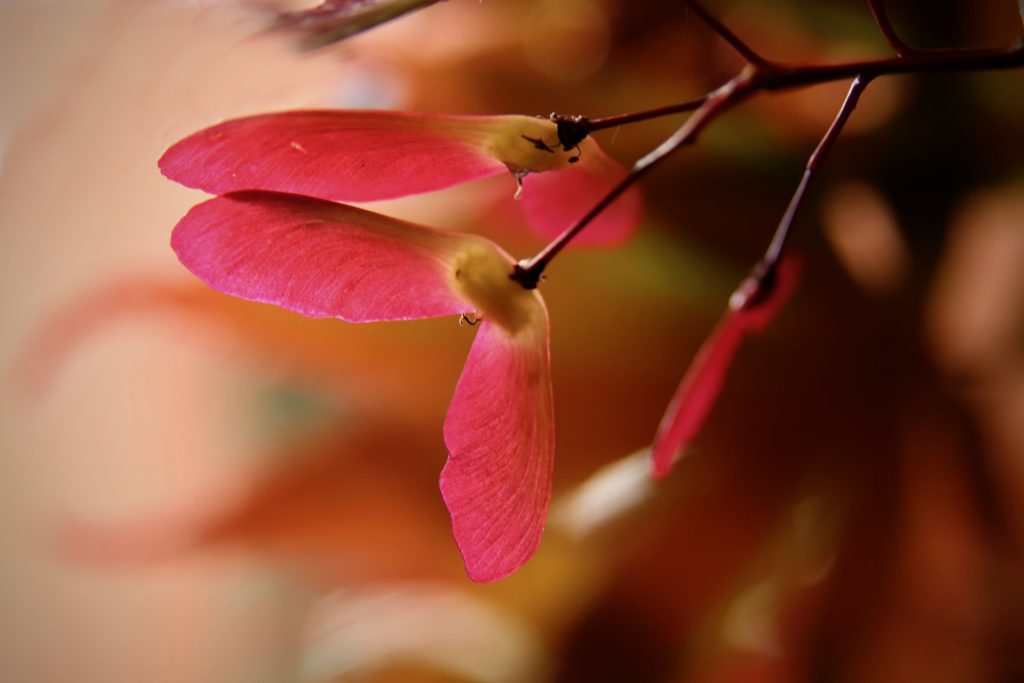As Maple trees shed their fruits, it is hard not to be captivated by the view and stare in admiration. The free fall of maple seeds is simply graceful. Commonly referred to as helicopters, samaras are the fruit of Maple trees. Inside of each fruit one can find seeds that are used by the parent plant to produce new ones. The nickname helicopter refers to the similarity that exists between its motion as it falls to the ground and that of a helicopter. Indeed, a remarkable aspect of the samaras is the behavior they display as they fall. As the fruit of the Maple seed descends to the ground, it performs a rotating motion that mimics the rotor blade of helicopters in unpowered descent, a behavior that has intrigued scientists and has been the subject of many studies. The auto-gyration motion and flight mechanics of the samaras have been observed in order to explain why and how the fruit rotates on itself as it leaves the tree.
Importance of understanding the whirling motion of Samaras:
The use of seeds to produce new plants is called seed dispersal. Since trees are unable to move, they rely on different means for the dispersal of their seeds, such as the wind, water, animal, or human beings. Samaras being carried away by the wind are an example of wind dispersal. Seed dispersal is important for the survival of species. It allows the plant to spread in its environment. By allowing the seeds to fall at great distances from the parent plant, decreases the chances of interference of the growth of new plants with the development of the parent plant and allows it to colonize new environments. Studying the flight of samaras helps understand how this process can be enhanced. However, not only does it help with seed dispersal, but it may also have applications that can help advance the field of aviation and the conception of flying devices.
Flight Mechanics:
There are two principal categories of seeds that have the ability to use oncoming winds to travel away from the parent plant, pappose seeds, and winged seeds. Maple seeds fall within the second one. As the name indicates, winged seeds tend to have appendages that resemble wings and act as such. While pappose seeds use draft force to maintain their flight, winged seeds rely on lift force. While they share common traits, not all winged seeds rotate. The rotation of samaras is due to the location of its center of gravity which is found near the terminal end of the wings. The wings of the seeds of the Maple tree generate a stable leading-edge vortex (LEV) which accounts for the lift force slowing down the descent. Note that an LEV is a type of airflow that is halfway between a steady and a turbulent flow. Upon being detached from the tree and is released into the air, the very shape of the wing initiates the stable vortex. The mechanism used by samaras has been identified to be similar to the LEVs of insects such as flower flies.
Featured image by Annette Meyer via Pixabay licensed under Pixabay License

